Key takeaways:
- Selective mutism is often linked to underlying anxiety, requiring understanding and support from parents, educators, and peers to foster communication.
- Discussing selective mutism helps demystify the condition, encouraging empathy and creating supportive environments for affected children.
- Community events, social media engagement, and school collaborations are effective strategies for raising awareness and understanding of selective mutism.
- Open conversations about selective mutism can reduce stigma and encourage children to express themselves in alternative ways, promoting a sense of connection and understanding.
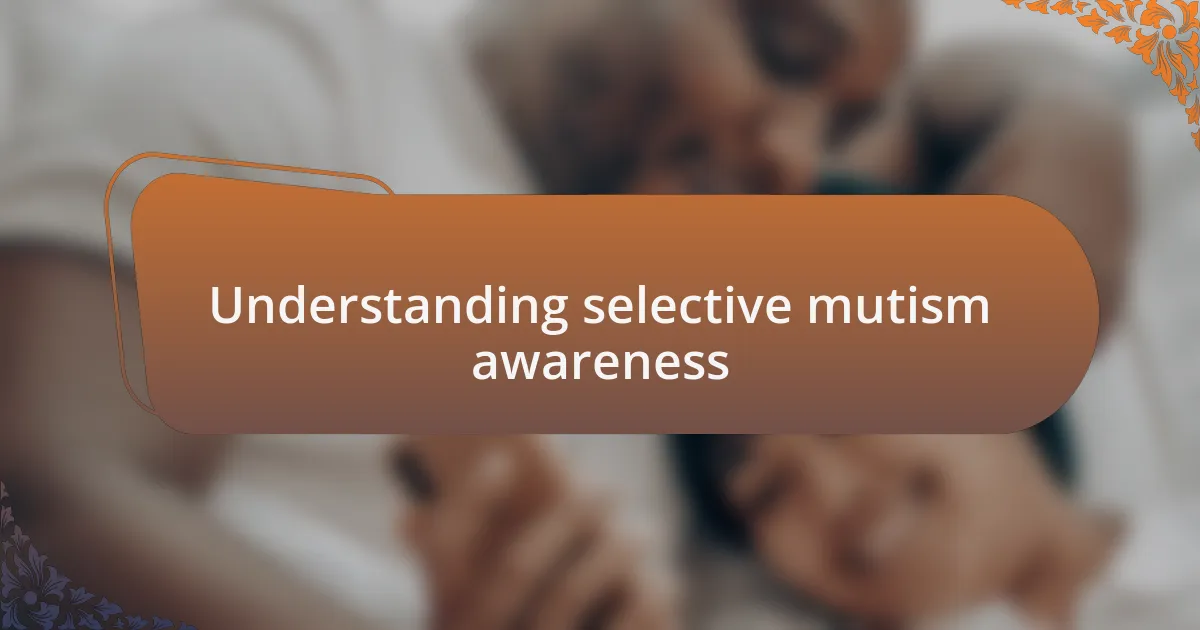
Understanding selective mutism awareness
Selective mutism awareness is a vital aspect of understanding how this complex anxiety disorder manifests, particularly in children. Reflecting on my experience, I remember meeting a young girl who would speak freely at home but would remain silent in school, her eyes filled with a mix of fear and frustration. How many other children feel trapped in similar situations, unable to find their voice in environments that should feel safe and encouraging?
Recognizing selective mutism isn’t just about identifying a child who doesn’t speak; it’s about understanding the underlying anxiety that keeps them from communicating. I once spoke with a parent who shared their despair about their child’s struggle to interact during playdates. It struck me that awareness should extend beyond just educators to parents and peers, fostering an environment where support and empathy can flourish.
Awareness also means acknowledging the misconceptions that surround selective mutism—like the belief that it’s merely about being shy. I often ask myself how we can better educate others about the nuances involved. By sharing our stories and experiences, we lift the veil of misunderstanding and bring hope to those grappling with this condition. What if, instead of silence, we filled the conversation with compassion and understanding? That could truly make a difference.
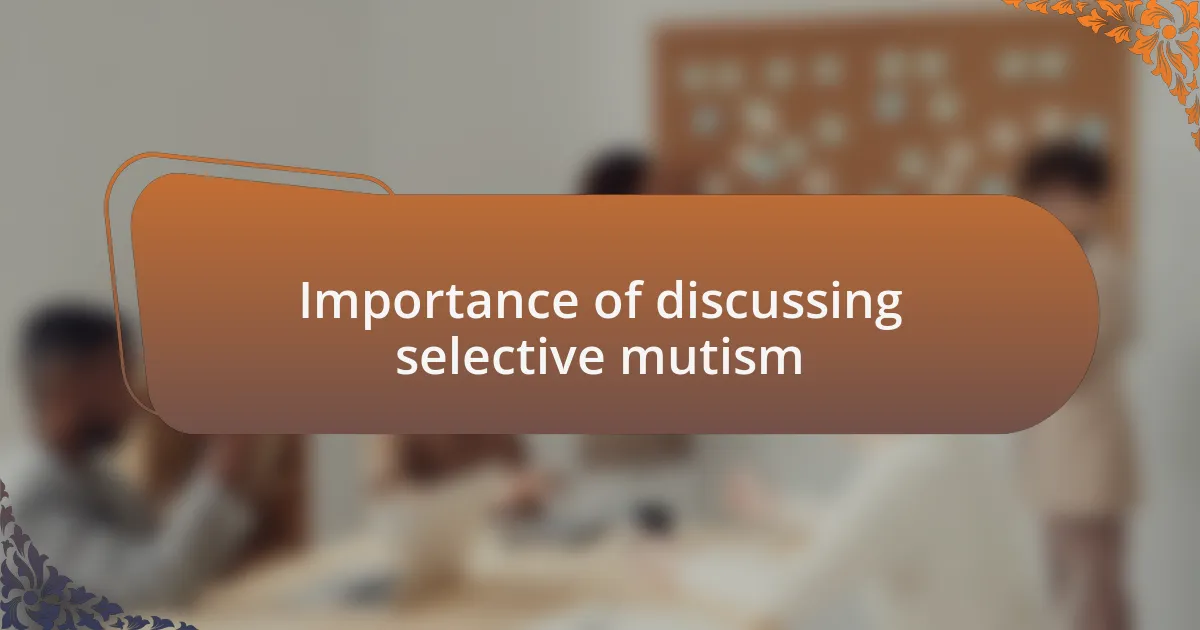
Importance of discussing selective mutism
Discussing selective mutism is fundamental because it helps demystify the condition and encourages open conversations. I recall a workshop where we talked about selective mutism in-depth; parents expressed how relieved they felt to share their experiences. It made me realize that many felt isolated and overwhelmed, yet understanding that others share similar struggles can be incredibly comforting.
The importance of conversation around this topic cannot be overstated. I remember presenting to a group of teachers, and the moment I highlighted the emotional toll on children experiencing selective mutism, I saw a shift in their intent gaze. With awareness, they could better empathize and support their students, creating a nurturing classroom where every child felt valued and understood.
Exploring selective mutism also means we can address harmful stereotypes that can hinder a child’s progress. When I hear people casually label a quiet child as “just shy,” it prompts me to speak up. How many opportunities for connection are missed because of such oversimplifications? By fostering discussions, we can advocate for the necessary understanding and action that transforms lives.
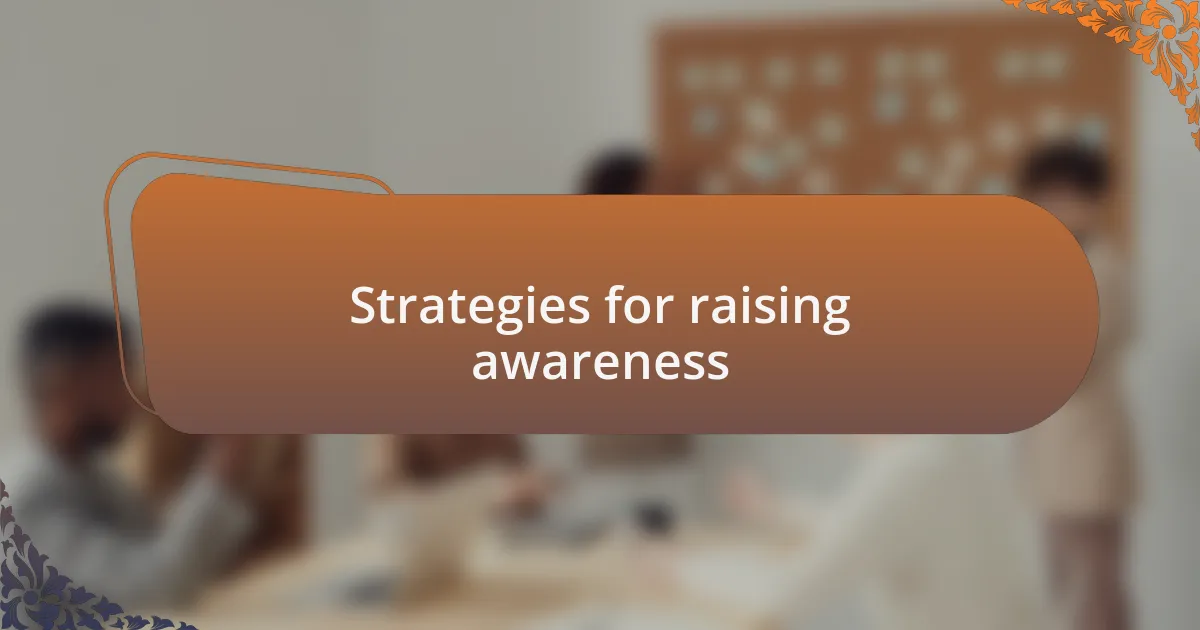
Strategies for raising awareness
Raising awareness about selective mutism requires a multi-faceted approach. One effective strategy is organizing community events, such as workshops or informational sessions. I once attended a local event where families came together, sharing their journeys amidst supportive conversations. It struck me how strengthening community bonds can foster understanding and acceptance, allowing for a safe space to discuss experiences.
Another engaging method is utilizing social media platforms to reach wider audiences. I remember creating a series of posts that shared personal stories and practical tips for parents and teachers. The responses were overwhelmingly positive, with individuals expressing gratitude for the insights. Have you ever thought about how powerful a single story can be in shifting perceptions? These narratives can ignite conversations that, in turn, create change.
Moreover, collaborating with schools to implement awareness programs can be highly effective. During one initiative, I helped develop resources for educators that highlighted the signs and needs of children with selective mutism. Witnessing teachers become more attuned to their students’ struggles was incredibly rewarding. It’s amazing how targeted education can empower individuals to foster a more inclusive environment for all kids.

Personal experiences with selective mutism
Experiencing selective mutism brings with it a unique set of challenges. I vividly remember the feeling of sitting in my classroom, tongue-tied while my classmates voiced their thoughts freely. It often felt like I was trapped in my own world, yearning to speak but unable to bridge the gap between my thoughts and words. Can you imagine how isolating that can be?
As I navigated social situations, I found comfort in the few friends who understood my struggles. One afternoon, while playing quietly in the park, a friend asked me why I sometimes went silent. Instead of feeling embarrassed, I opened up about my selective mutism. This moment of vulnerability not only strengthened our friendship but also highlighted how valuable understanding and empathy can be. Have you ever experienced that sense of relief when someone truly gets you?
Reflecting on my journey, I’ve come to realize the importance of acceptance, both from myself and those around me. I recall a family gathering where, rather than forcing me to speak, my relatives engaged in games that didn’t require verbal communication. That evening was a lesson in patience and understanding, reminding me that connection goes beyond words. Isn’t it fascinating how support can create a safe haven for growth and self-expression?
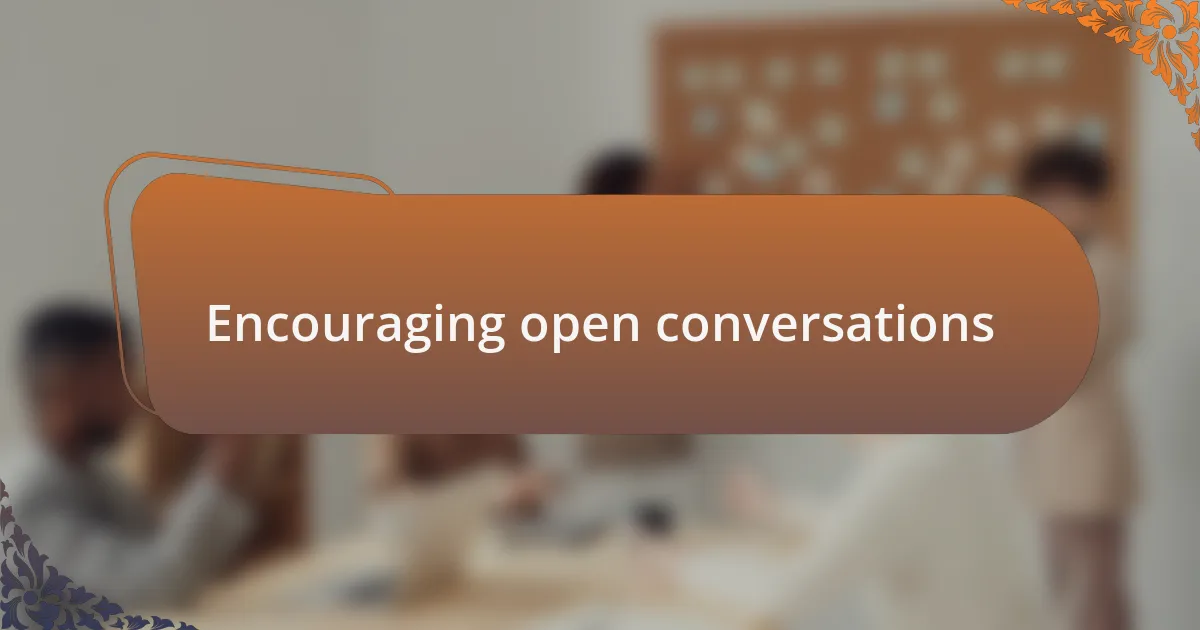
Encouraging open conversations
Encouraging open conversations is crucial for fostering understanding about selective mutism. I remember one instance when a teacher noticed my silence in a group discussion. Instead of singling me out, she opened the floor for everyone to share their thoughts in written form first, creating an inclusive environment. Have you ever felt how a simple shift in approach can make all the difference?
In my experience, when adults gently encourage children to express themselves in non-verbal ways, it sets the stage for future communication. I recall a time when a family member used drawing as a medium for me to share my feelings. This approach didn’t pressure me to talk, but rather invited me to communicate in a way that felt safe. Isn’t it interesting how alternatives can bridge the gap of silence?
Open conversations also thrive when we break down the stigma surrounding selective mutism. A friend of mine started sharing stories about her own struggles with anxiety, which opened the door for others to share their experiences. This taught me that vulnerability can encourage others to be open as well, creating a supportive community. How powerful is it to know that by sharing our stories, we can help someone else feel less alone?
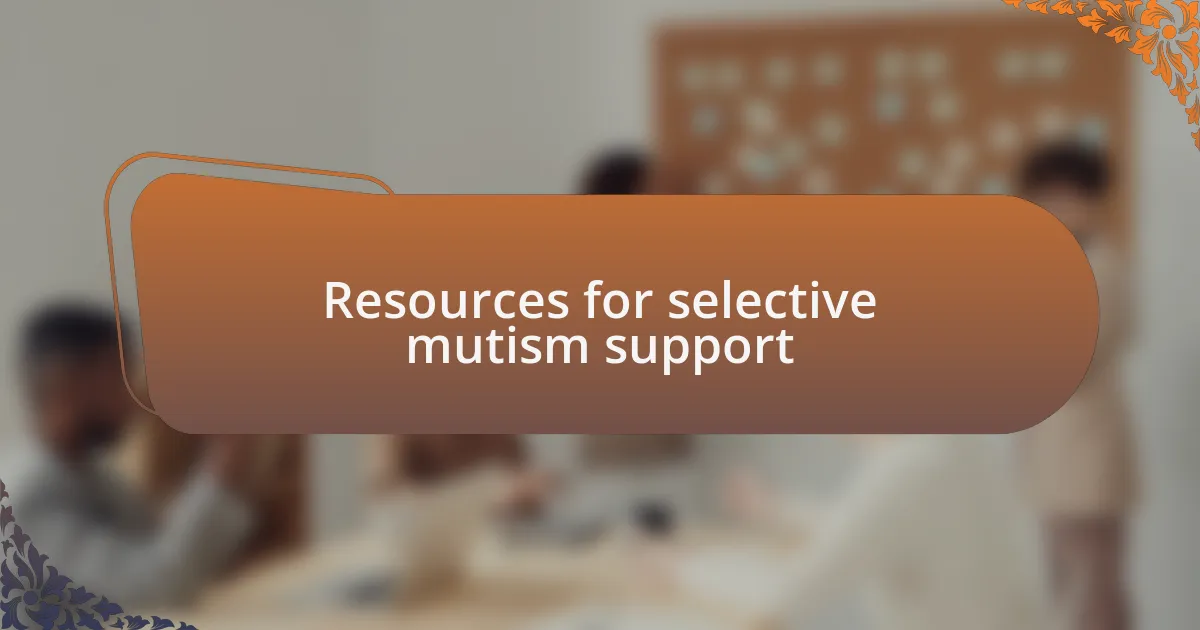
Resources for selective mutism support
When seeking support for selective mutism, there are invaluable resources that can make a genuine difference. I once found solace in online communities where parents share their experiences and strategies. It’s comforting to know that there are others who truly understand the journey. Have you ever participated in a forum where the collective wisdom inspires hope?
Local support groups can also be a lifeline. I attended a few workshops that focused specifically on selective mutism, and the connections I made there were profound. The conversations felt less like small talk and more like shared experiences; it was refreshing to meet others who were navigating similar challenges. Doesn’t it feel reassuring to know you’re not alone?
Additionally, professional resources like therapists specializing in selective mutism can provide tailored strategies that resonate with individual experiences. I vividly remember a session where we explored role-playing scenarios to practice speaking in safe environments. That approach not only built confidence but also highlighted how vital it is to have trained professionals on your side. Have you considered how effective personalized support can truly empower you or your child?